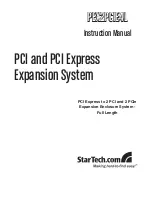
Basic Configuration Using the Command-Line Interface
Configuring T1 and E1 Feature Cards
10
Cisco AS5350XM and Cisco AS5400XM Universal Gateways Software Configuration Guide
Verify
To verify that your controller is up and running and no alarms have been reported, enter the
show
controller
command and specify the controller type, slot, and port numbers:
AS5400#
show controller t1 1/7
T1 1/7 is up.
No alarms detected.
Framing is ESF, Line Code is B8ZS, Clock Source is Line Primary.
Version info of slot 2: HW: 2, Firmware: 14, NEAT PLD: 13, NR Bus PLD: 19
Data in current interval (476 seconds elapsed):
0 Line Code Violations, 0 Path Code Violations
0 Slip Secs, 0 Fr Loss Secs, 0 Line Err Secs, 0 Degraded Mins
0 Errored Secs, 0 Bursty Err Secs, 0 Severely Err Secs, 0 Unavail Secs
Total Data (last 24 hours)
0 Line Code Violations, 0 Path Code Violations,
0 Slip Secs, 0 Fr Loss Secs, 0 Line Err Secs, 0 Degraded Mins,
0 Errored Secs, 0 Bursty Err Secs, 0 Severely Err Secs, 0 Unavail Secs
Note the following:
•
The controller must report being up.
•
No errors should be reported.
The TDM subsystem troubleshooting commands are not used during normal system operation.
Instead, the Cisco IOS commands show the current status and settings of the TDM backplane,
enable debug output for display to the user when TDM programming occurs, and provide a set of
test commands to test the functionality of the TDM path. TDM commands are generally used only
by a Cisco technical support representative during troubleshooting of data continuity problems.
Note
For details on the TDM feature, see the Cisco IOS software configuration guide and
command reference publications. These publications are available on the
Documentation DVD and on the World Wide Web from the Cisco home page, or you can
order printed copies. See
“Obtaining Documentation” section on page 21
.
If you are having trouble:
•
First decide if the problem is due to the T1 or E1 line or with a particular channel group. If the
problem is with a single channel group, you have a potential interface problem. If the problem is
with the T1 or E1 line, or with all channel groups, you have a potential controller problem. (See the
“Configuring ISDN PRI” section on page 12
.)
•
To troubleshoot your E1 or T1 controllers, first check that the configuration is correct. The framing
type and line code should match to what the service provider has specified. Then check channel
group and PRI-group configurations, especially to verify that the timeslots and speeds are what the
service provider has specified. At this point, the
show controller t1
or
show controller e1
commands should be used to check for T1 or E1 errors. Use the command several times to determine
if error counters are increasing, or if the line status is continually changing. If this is occurring, you
need to work with the service provider.
•
Another common reason for failure is the
dial-tdm-clock priority
setting. The default setting is a
free-running clock that causes clock slip problems if not set properly. (See the
“Configuring
Clocking” section on page 30
.)


































